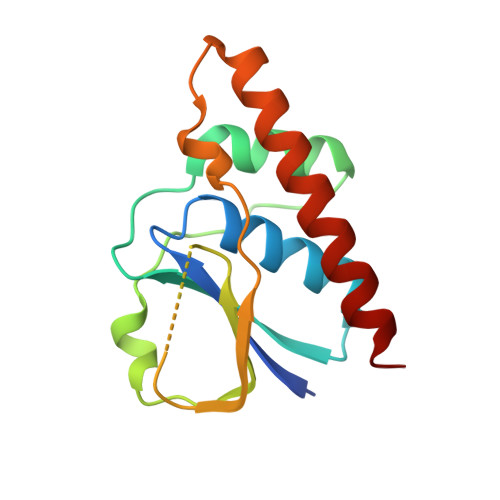Unraveling the multifaceted resilience of arsenic resistant bacterium Deinococcus indicus .
Gouveia, A.G., Salgueiro, B.A., Ranmar, D.O., Antunes, W.D.T., Kirchweger, P., Golani, O., Wolf, S.G., Elbaum, M., Matias, P.M., Romao, C.V.(2023) Front Microbiol 14: 1240798-1240798
- PubMed: 37692390
- DOI: https://doi.org/10.3389/fmicb.2023.1240798
- Primary Citation of Related Structures:
8P5N, 8P6M - PubMed Abstract:
Arsenic (As) is a toxic heavy metal widely found in the environment that severely undermines the integrity of water resources. Bioremediation of toxic compounds is an appellative sustainable technology with a balanced cost-effective setup. To pave the way for the potential use of Deinococcus indicus, an arsenic resistant bacterium, as a platform for arsenic bioremediation, an extensive characterization of its resistance to cellular insults is paramount. A comparative analysis of D. indicus cells grown in two rich nutrient media conditions (M53 and TGY) revealed distinct resistance patterns when cells are subjected to stress via UV-C and methyl viologen (MV). Cells grown in M53 demonstrated higher resistance to both UV-C and MV. Moreover, cells grow to higher density upon exposure to 25 mM As(V) in M53 in comparison with TGY. This analysis is pivotal for the culture of microbial species in batch culture bioreactors for bioremediation purposes. We also demonstrate for the first time the presence of polyphosphate granules in D. indicus which are also found in a few Deinococcus species. To extend our analysis, we also characterized Di ArsC2 (arsenate reductase) involved in arsenic detoxification and structurally determined different states, revealing the structural evidence for a catalytic cysteine triple redox system. These results contribute for our understanding into the D. indicus resistance mechanism against stress conditions.
- Instituto de Tecnologia Química e Biológica António Xavier (ITQB NOVA), Universidade Nova de Lisboa, Oeiras, Portugal.
Organizational Affiliation:
















